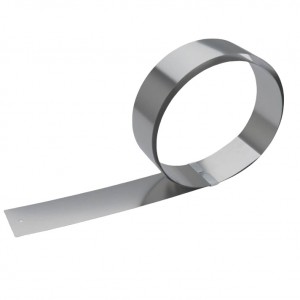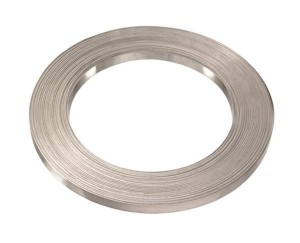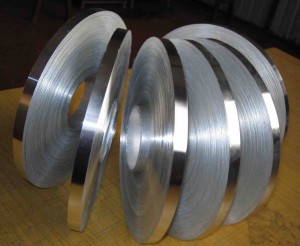Stainless Steel Strip
-

321 Stainless Steel Strip
321 stainless steel, an improved iteration of 304, integrates Titanium to resist severe corrosion. It is ideally suited for applications in temperatures spanning from 430℃ to 900℃.
-

304 Stainless Steel Strip
304 Stainless Spring Steel Strip is a type of stainless steel strip specifically engineered for spring applications. Known for its good corrosion resistance, it is suitable for use in various environments. This stainless steel strip showcases excellent spring properties, including good elasticity, high resilience, and the ability to return to its original shape after deformation.
-

204 Stainless Steel Strip
204 Stainless Steel Strip: SS 204 is an austenitic chromium-manganese stainless steel that contains 2-4% copper and 0.05-0.25% nitrogen. The addition of copper enhances its ductility compared to 201 and 304 stainless steels. In specific environments, copper also improves resistance to corrosion and stress corrosion cracking. SS 204 bridges the cost-property gap between the 200 and 300 series stainless steels, offering a balanced combination of affordability and performance.
-

439 Stainless Steel Strip
439 Stainless Steel is an 18% chromium, titanium-stabilized ferritic stainless steel that offers corrosion resistance comparable to 304 stainless steel. This grade combines the advantages of both chromium and titanium, resulting in improved weldability and exceptional resistance to stress corrosion cracking.
-

440 Stainless Steel Strip
440 stainless steel is a high-carbon, martensitic stainless steel recognized for its exceptional strength, hardness, and wear resistance. It is commonly used in applications that demand good corrosion resistance and high durability, such as cutting tools, bearings, and surgical instruments. This steel can be heat treated to achieve various hardness levels, making it versatile for a wide range of industrial uses.
-

904L Stainless Steel Strip
904L stainless steel strip is a low carbon, unstabilized austenitic stainless steel. This highly alloyed material includes copper to enhance its resistance to strong reducing acids, such as sulfuric acid. Additionally, 904L stainless steel is resistant to stress corrosion cracking and crevice corrosion. It is non-magnetic and provides excellent ductility, strength, and weldability.
-

310 Stainless Steel Strip
Type 310 stainless steel is an austenitic alloy renowned for its exceptional high-temperature capabilities, capable of withstanding temperatures up to 2000˚F in dry air thanks to its high chromium and nickel content. It exhibits remarkable creep strength, superior oxidation resistance, and forms a robust scale at elevated temperatures. Known for its excellent performance in thermal cycling and surpassing Type 309, this grade also resists sulfidation and carburization in high-temperature environments. Furthermore, Type 310 remains non-magnetic in both annealed and cold-worked states and shares corrosion resistance qualities comparable to Types 304/304L.
-

2205 Stainless Steel Strip
Duplex 2205, a nitrogen-enhanced stainless steel, was developed to overcome the limitations of the 300 series stainless steels. As a premier supplier of 2205 materials, we specialize in providing expert services and maintaining a comprehensive inventory.
-

QN1803 Stainless Steel Strip
QN1803 Stainless Steel Strip: This high-strength, corrosion-resistant stainless steel contains nitrogen, making it an excellent alternative to 304. It offers enhanced performance and greater cost-efficiency. -

436 Stainless Steel Strip
436 stainless steel is an enhanced variant of stainless steel 434, incorporating columbium to address challenges such as “roping” or “ridging” that may arise during stretch forming operations. This alloy is frequently utilized in automotive and appliance trim applications.









